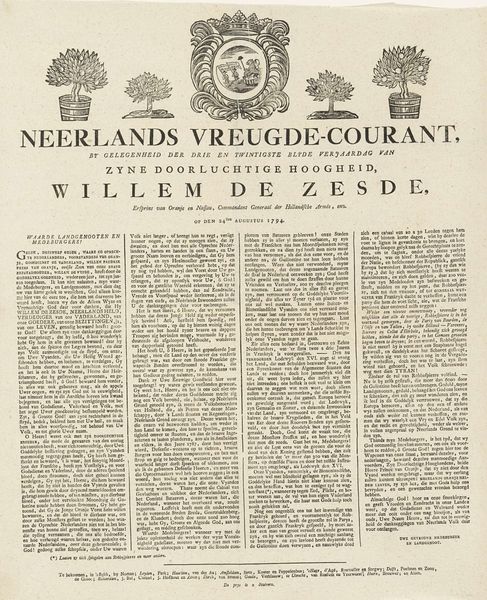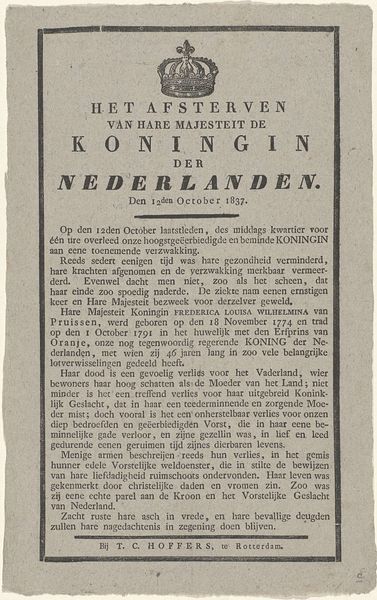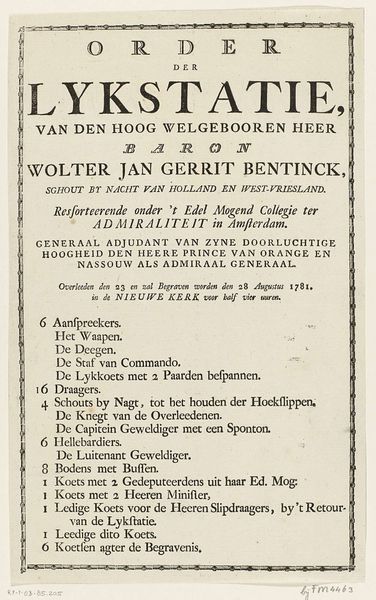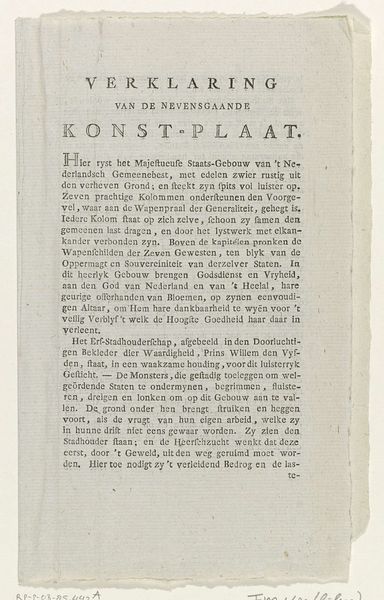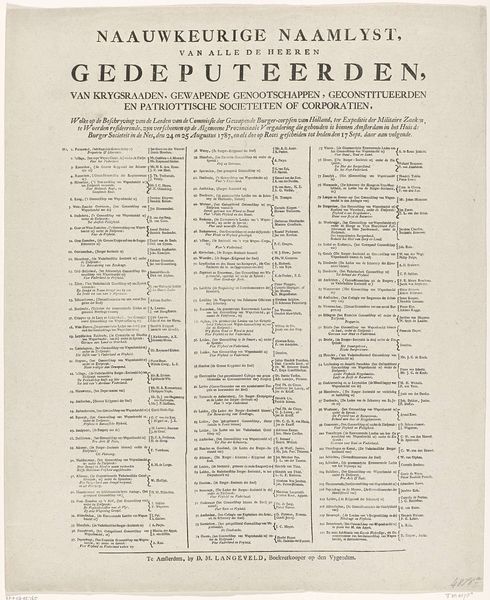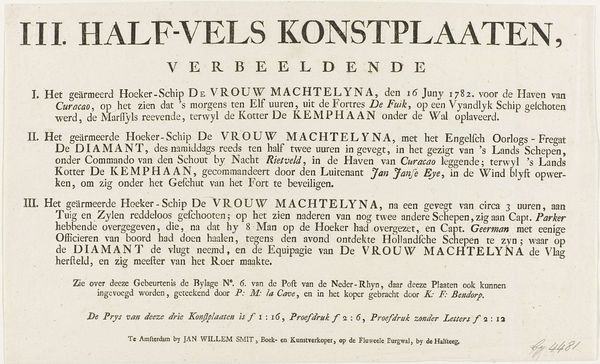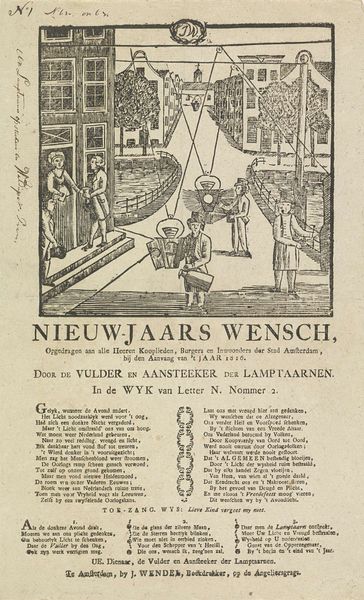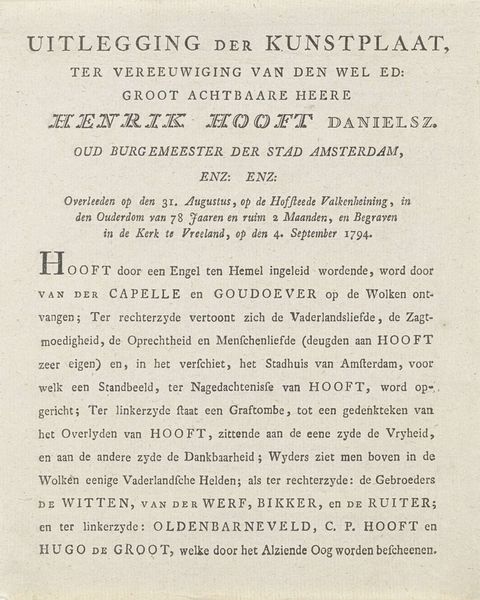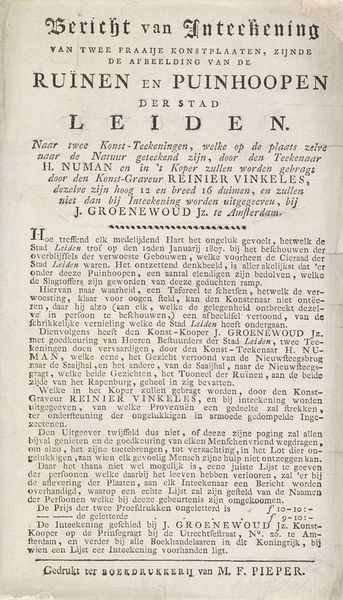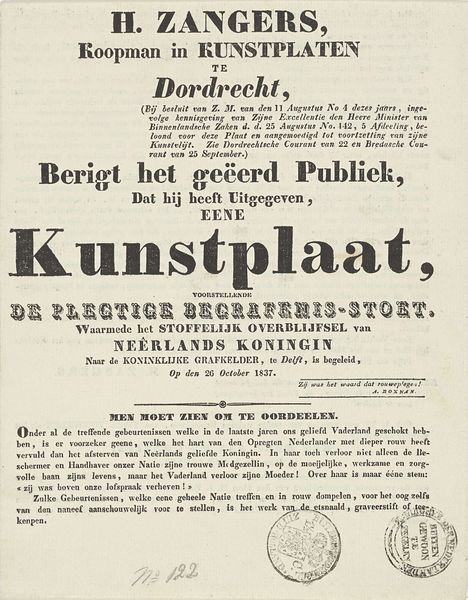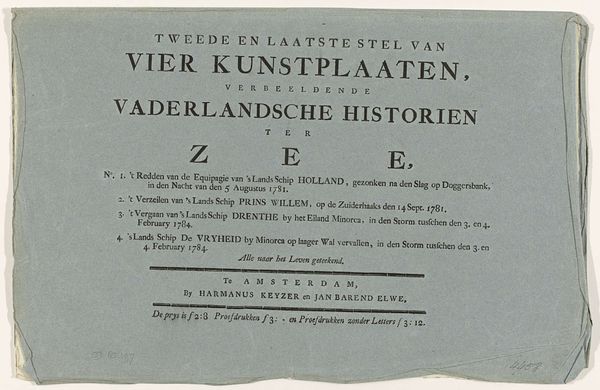
Dood van Neêrlands Koningin. 's Gravenhage den 12 october 1837 1837
0:00
0:00
graphic-art, print, etching, paper, typography
#
portrait
#
graphic-art
#
dutch-golden-age
# print
#
etching
#
paper
#
typography
Dimensions: height 340 mm, width 210 mm
Copyright: Rijks Museum: Open Domain
This broadside, produced by J.B. Ulrich in Rotterdam in October 1837, marks the death of the Queen of the Netherlands. These types of prints were often produced quickly and cheaply to disseminate news and express public sentiment. This print reflects the societal expectations placed on women, especially those in positions of power. Queen Wilhelmina is praised as the “Mother of the Fatherlands,” a trope which emphasizes her nurturing and caring role. The print also references her virtues, such as piety, compassion, and devotion to her husband, King William I. These qualities align with the 19th-century ideal of the “angel in the house,” which confined women to the domestic sphere and defined them by their moral purity and submissive nature. However, the print also acknowledges the Queen's strength and resilience, as it states, “Wilhelmina, through virtue inspired, stood firm and upright.” Here, we see how gender, power, and identity intersect in shaping the narrative around Queen Wilhelmina’s death.
Comments
No comments
Be the first to comment and join the conversation on the ultimate creative platform.
